Kaavad ~ Kivad ~ Door
Have you ever felt you are fighting a lost battle?
Narrow roads flanked with typical thorny Aravalli vegetation growing on bright dusty sand… Stately houses with worn-out paint reminiscent of an erstwhile glory of a rich and powerful land… We were at Bassi village of Chittor, Rajasthan– the birthplace of Kaavad.
The moment we got off the bike in the crazy heat, I saw a shy-looking old man walk towards us hesitantly. He looked like a kind grandfather, with few hairs on his head, and some missing teeth. My partner exclaimed, “Arre aap itni garam dhoop mein chappal kyun nahi pehene?” and I realised with a pang that he had been so eager to welcome us, that he had forgotten his footwear.
This was Dwarka Prasadji— one of the last kaavad-makers in the world. One of the last proponents of a 500-year-old tradition of 3D storytelling called Kaavad Katha.
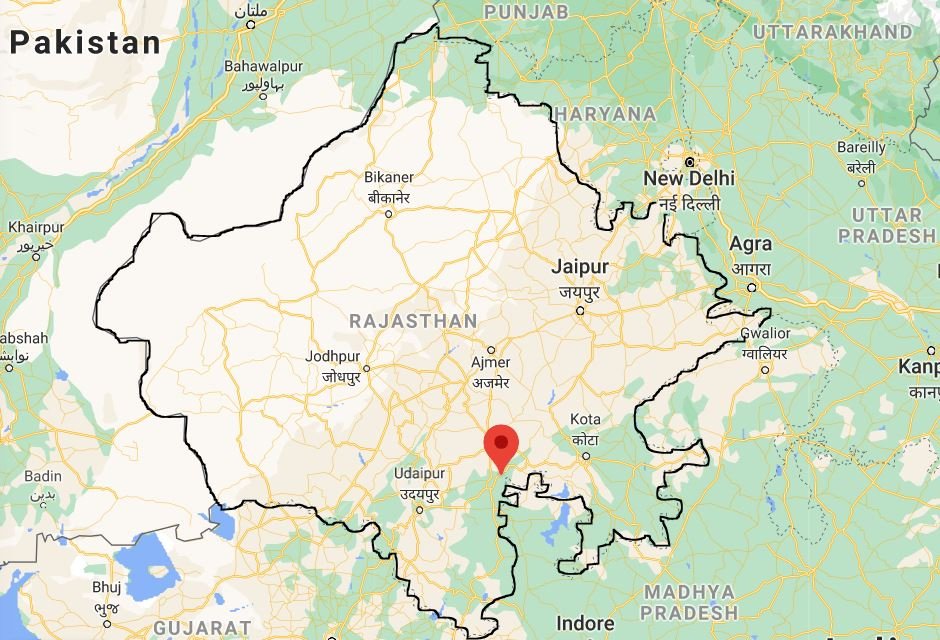
What is Kaavad?
A Kaavad typically is a temple or cupboard-like structure made of mango wood. It derives its name from the Rajasthani word Kivad meaning door. And indeed doors are special in a kaavad. That is because when you open its doors in the front, colorfully painted scenes of mythological epics like Ramayana or Mahabharata emerge.
On the front of this wooden temple you will see two dwarapalakas, i.e. guards of the temple entrance. Once you open the main two doors or panels of the kaavad, a blast of colors and imagery will astound you. Each door has paintings of popular mythological stories from Mahabharat and Ramayana.
When one door closes, another opens…
Alexander Graham Bell
True to the above quote, what is astounding about the kaavad is that every door leads to more doors or secret openings— it is an almost endless box of stories! But of course the stories do come to end. They end with the inner-most compartment of the kaavad, which has three idols of the presiding deities of the kaavad. This inner-most component symbolises the sanctum-sanctorum of the metaphorical temple that the kaavad stands for.
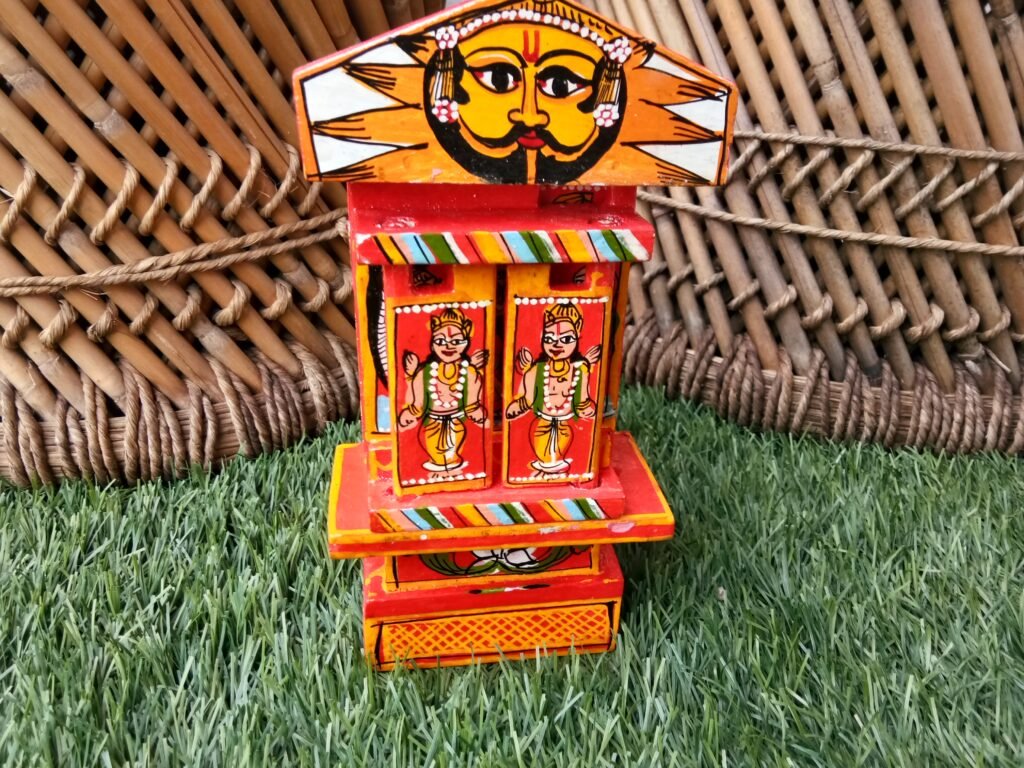
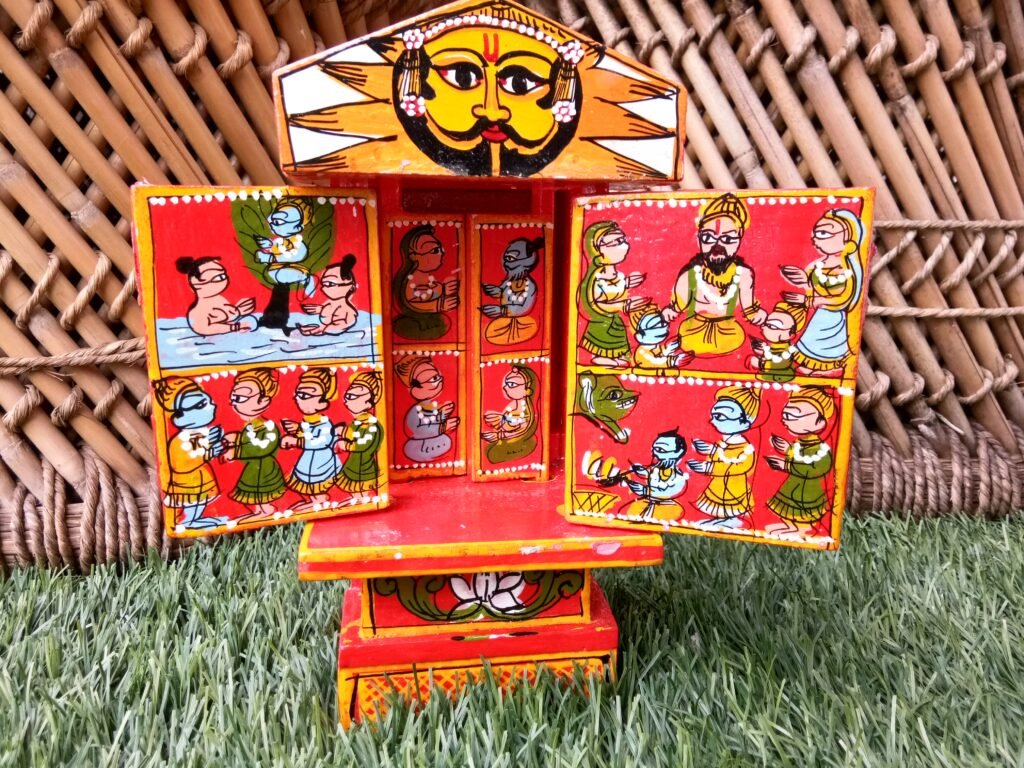
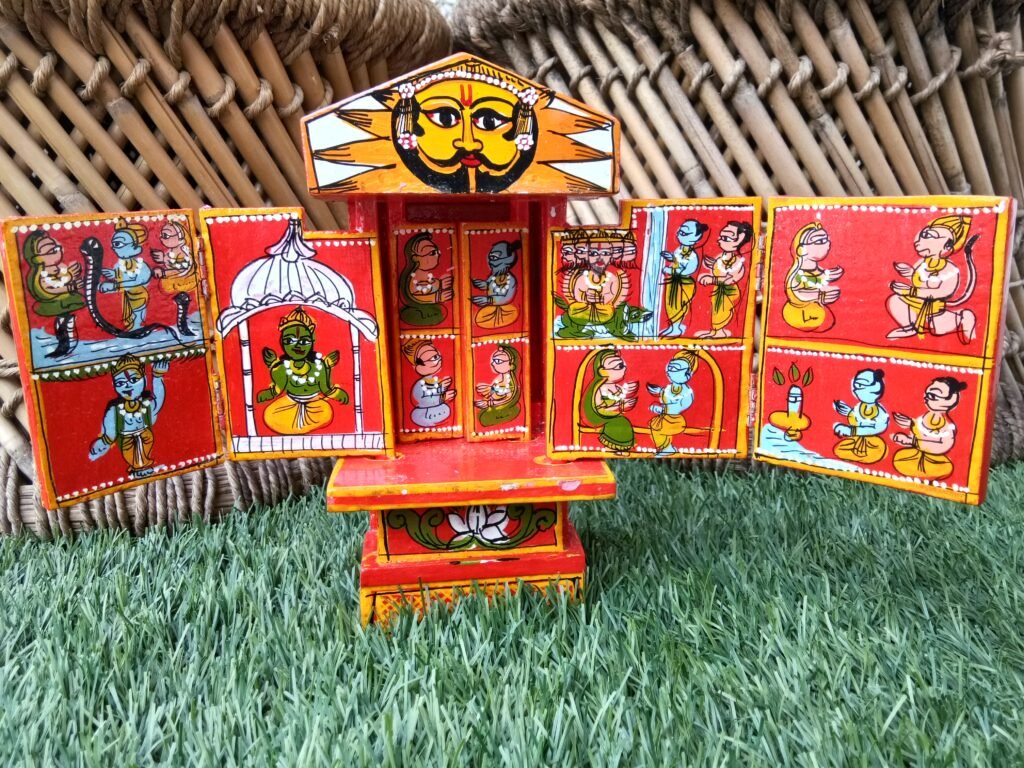
Story of the Storyteller
Dwarkaji invited us into his house, and we followed him up some stairs to his roof, a breezy place with a beautiful view where Dwarkaji often worked on his handicrafts. As we looked around curiously, I felt thrilled at the various wooden kaavad of multiple sizes and colors that I had only read about till now. Mesmerised, we asked Dwarkaji about his story.
He told us how he had been making kaavads since the past forty-five years. How he had seen kaavads being made in his house ever since he first opened his eyes. How everyone in his family, including his wife, son and daughter-in-law also make kaavads.
Soon, he told us about how kaavad originated.
The First Kaavad
Kaavad may be a 500-year-old rich tradition of oral storytelling from Rajasthan, but as per legend, the story of Kaavad starts with one of the most popular stories of Indian folklore. This folklore is of the dutiful son Shravan Kumar, who was carrying his blind parents to a temple. Unfortunately, during this journey King Dasratha accidently shot at him with a bow and arrow. According to local legend, the dying boy tells King Dasratha, “I am no longer going to be able to carry my parents to the temple. Now you will have to carry the temple to my parents.”
And that is how the first Kaavad, or mobile temple, emerged.
Creation of a Kaavad
The kaavad consists of a mobile temple made by a community of artisans called Kaavadiya Suthar. The suthars procure the pious mango wood and shape them into wooden frames and panels of the kaavad. After drying the wood in the sun, the first stage of painting is done on the panels. After yet another stage of drying, the finer details and outlines of the paintings are made. Post the final stage of drying, the panels are fitted into the wooden frame and the kaavad is ready for storytelling.
Watch Dwarkaji painting his kaavad in the video below.
The Emergence of Storytellers
Apart from creation of the kaavad, the oral storytelling using it is another major component of kaavad. The oral storytelling aspect to this mobile temple emerged with the story of a queen who had a kaavad, but couldn’t understand the stories depicted in it. So she hired a man to narrate these stories to her. And thus, emerged a community of storytellers called Kaavadiya Bhats, who would carry the kaavad around the land and narrate the stories from mythological epics and folklores to everyone.
This became especially important in medieval India when due to an onslaught of invaders, local temples were destroyed. The kaavadiya bhat would travel around carrying these hand painted story-boxes and tell common, illiterate village people stories of Ramayana, Mahabharata and other epics. In this way, the common man not only gained entertainment and knowledge of religion, but children also imbibed moral lessons which were deeply etched into these stories. In return, they would repay the kaavadiya bhat with modest goods like food grains, or milk.
But for the poor, kaavad took one more special form. An ordinary person could only dream of living royally in a palace one day, of riding grandly on an elephant, but he, of course, couldn’t do that in this lifetime. So he would ask the kaavad-suthar to paint stories of his dream life. And once the kaavad was ready, the entire family would gather around in glee while a kaavadiya bhat sat down to narrate the story of their dream life, complete with palaces and elephants.
In that way, kaavads became an opportunity for the ordinary to live a life of extraordinariness.
…even if just for a few moments.
…even if only in their imaginations.
Even though Dwarkaji is a kaavad-suthar, he very kindly told us the story of Ramayana in the form of Kaavad Katha. You can listen to him too in the video below.
An Endangered Artform
“Do you get orders often?”, I asked Dwarkaji, pulling myself out of the past and coming back to the present.
Dwarkajai replied that there hardly were any buyers. He usually got to go to a few art fairs every now and then. And a few visitors in his village in Rajasthan who come to cover his stories. The only ones who buy from him are foreign tourists who happen to visit him.
I asked him for a photograph, so he promptly took a kaavad in his hand. But then he got confused and started reciting a story. It broke my heart, and I just couldn’t get myself to ask him to stop his story. For a man whose entire life is about storytelling, in moments of uncertainty his first instinct is to tell a story. His whole world revolves around it. Imagine the one thing you stand for suddenly becoming meaningless for the world. It is an irony indeed that the world most in need of stories is too busy to listen to them. Kaavad has survived 500 years but the past 20 years of industrialisation and globalisation is slowly killing it.
Have you ever felt that you are fighting a lost battle?
I do when I meet artisans like this. What if we lose these stories and these storytellers forever?
India has more than 40 artforms which are on the verge of extinction. Let’s save ourselves from losing them forever. Steps are being taken to modernise the kaavad by making them on contemporary social themes like women empowerment and education, as well as popular folktales like Panchatantra and Hitopdesha. Yet, much more is required to be done.
In case you would like to contact Dwarkaji, or buy a kaavad, do drop a message below. We would love to connect you with him and the wider kaavad community. In the meantime, enjoy looking at some more of his kaavads.
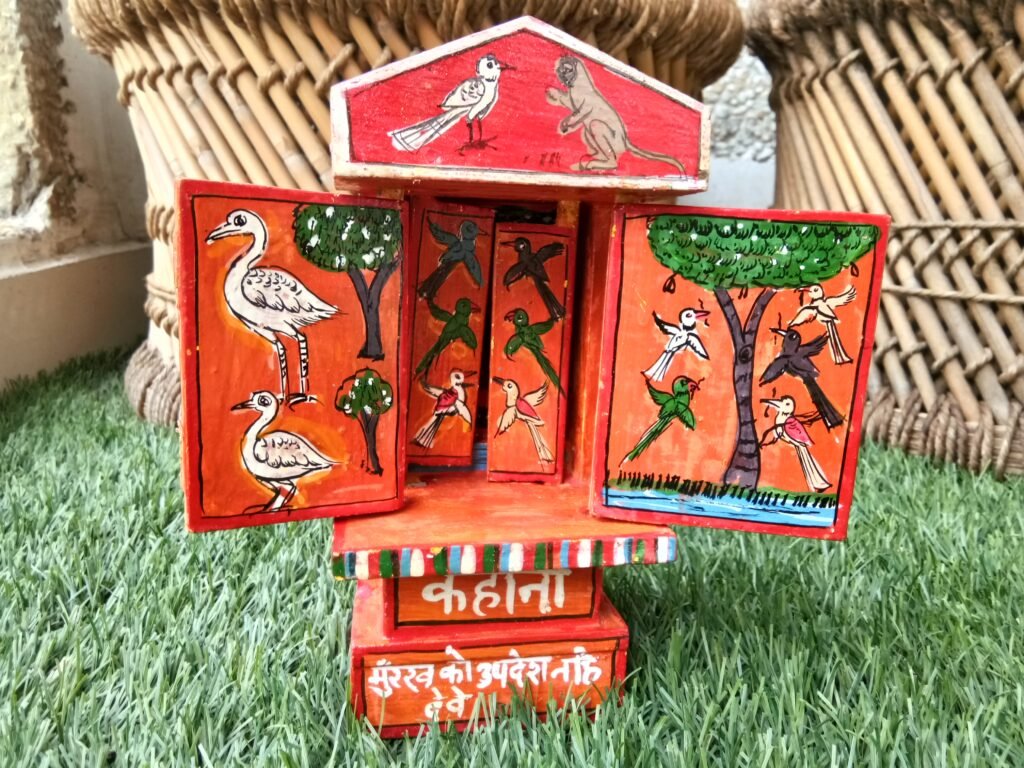
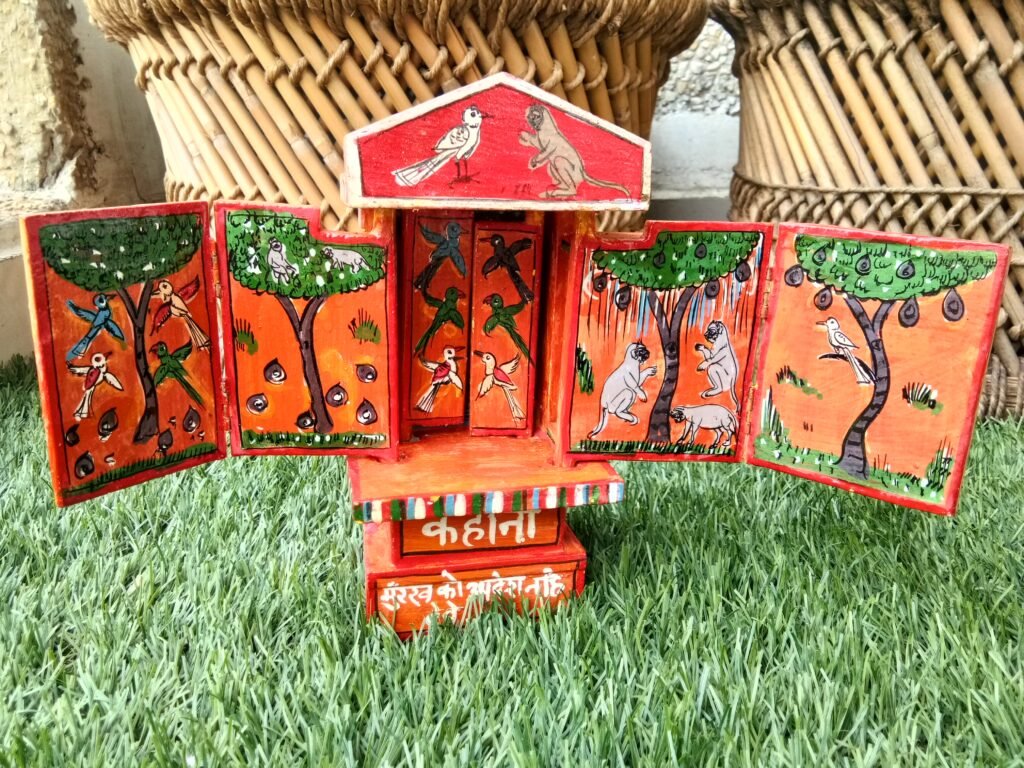
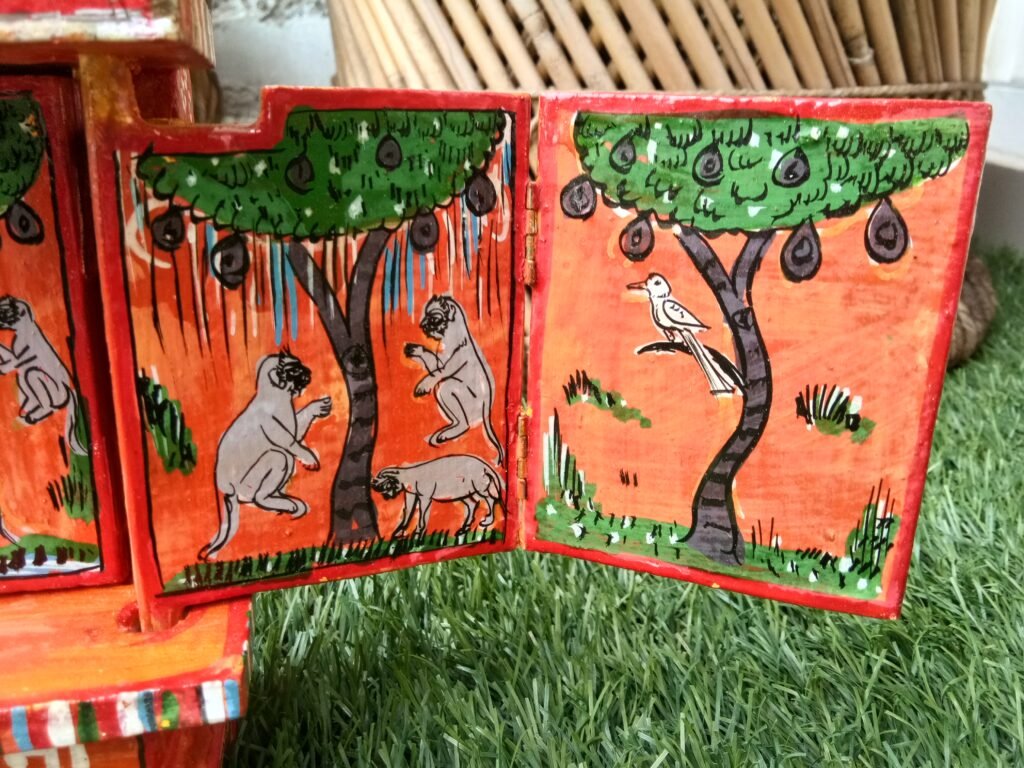
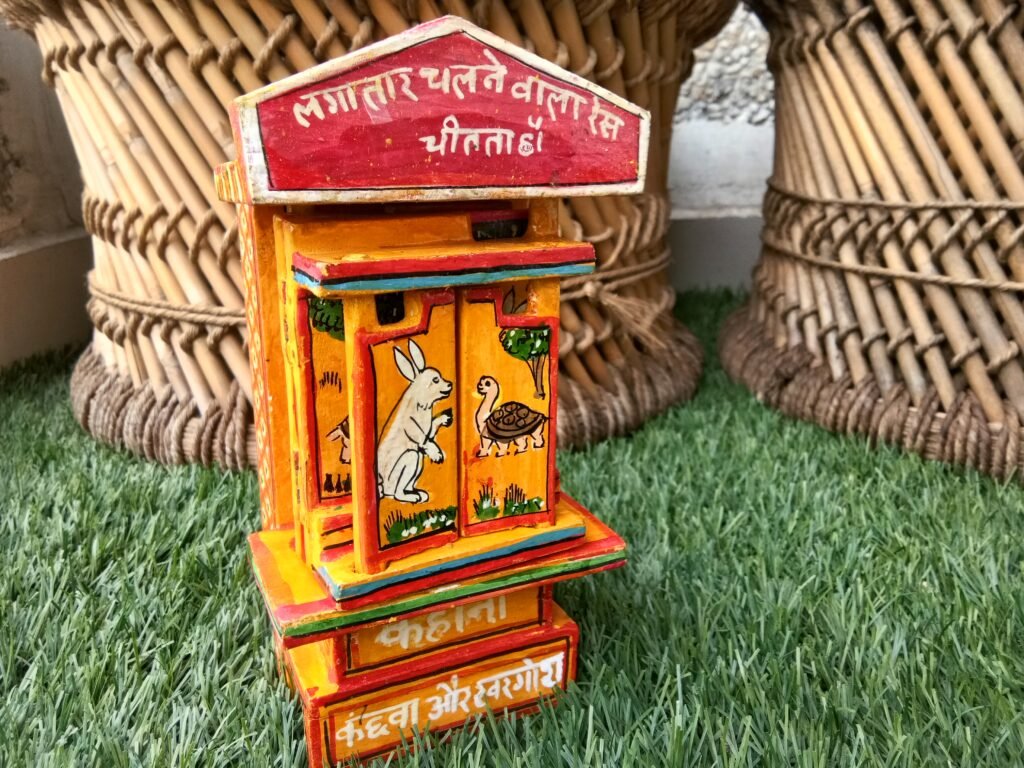
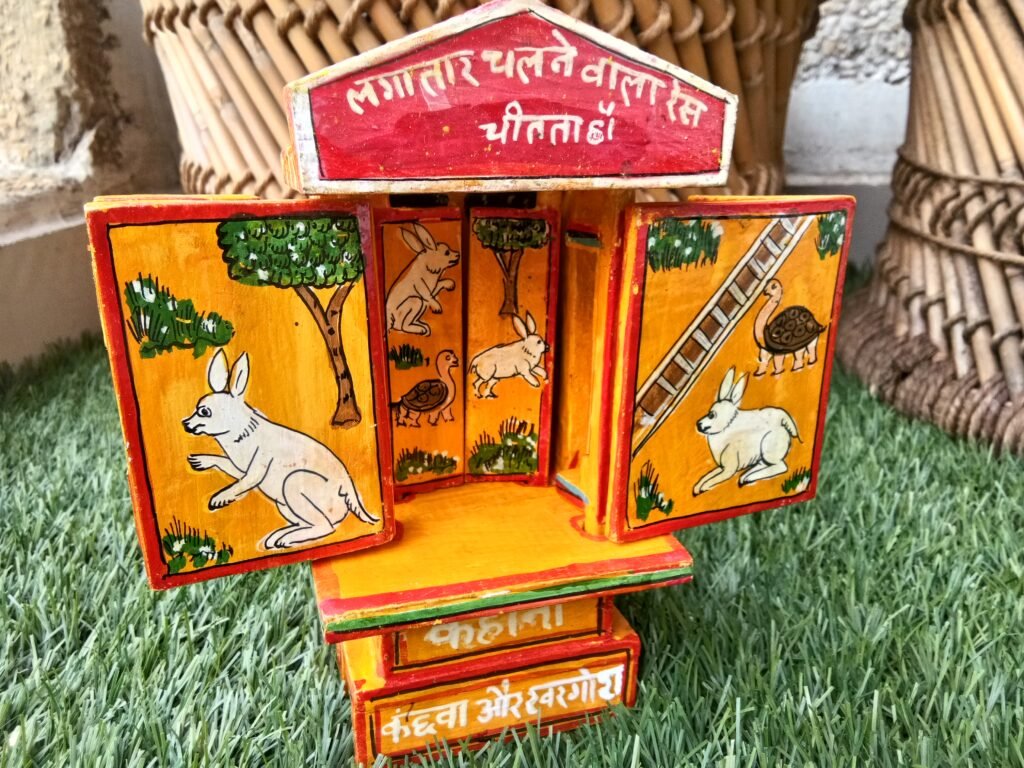
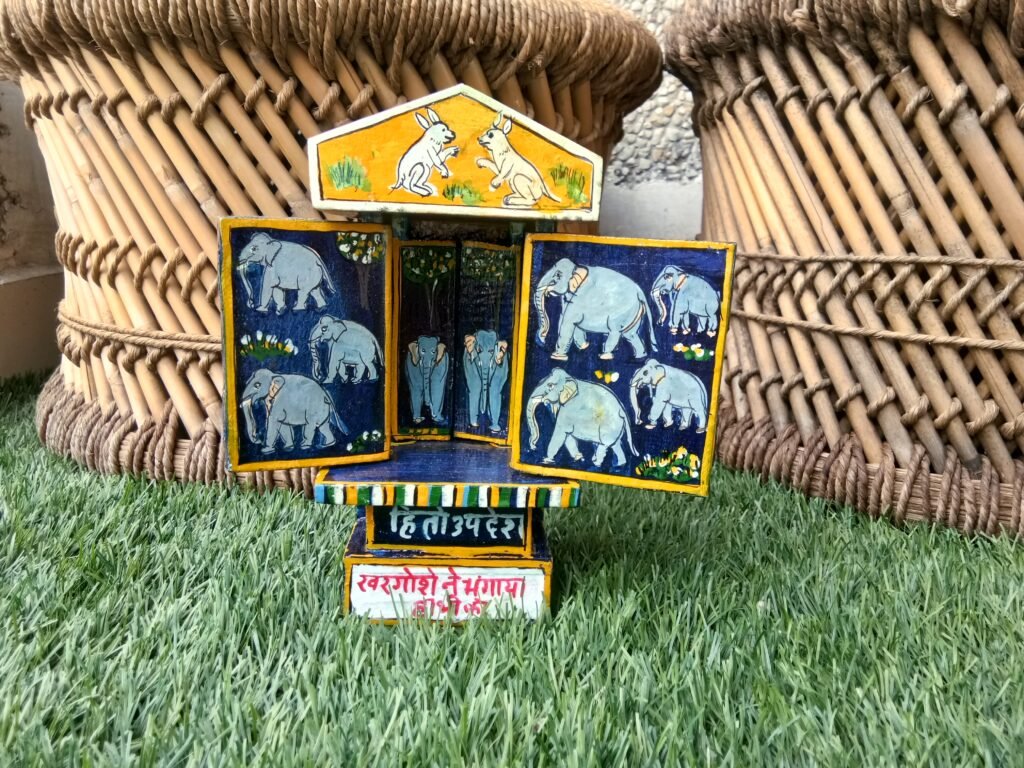
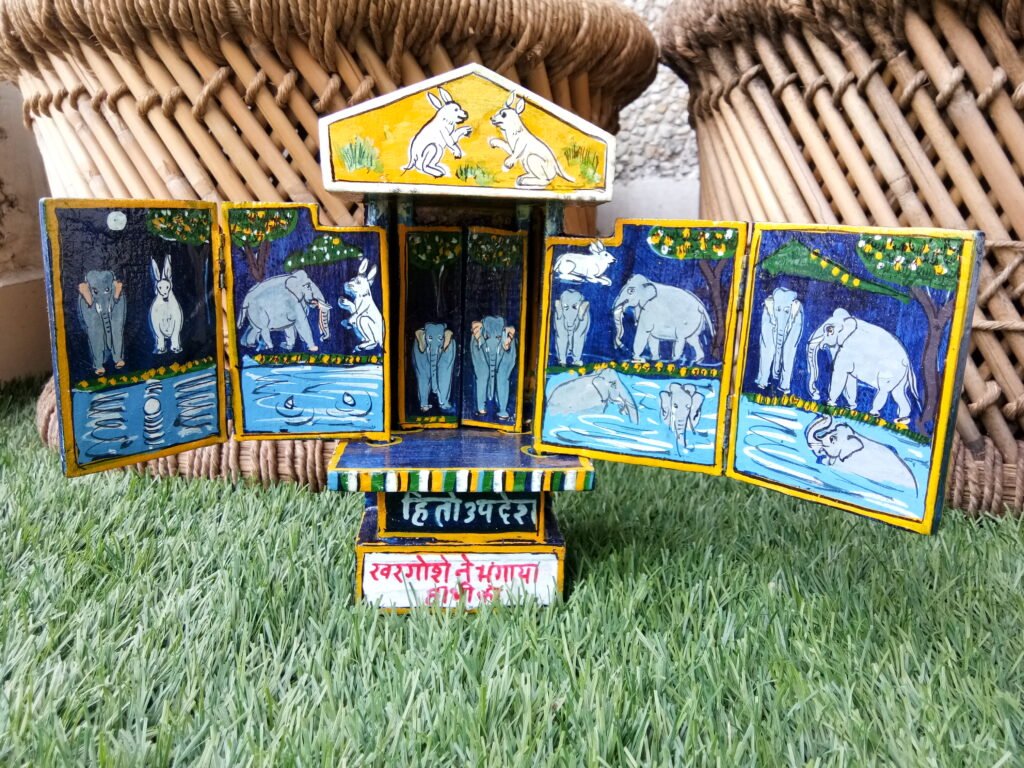
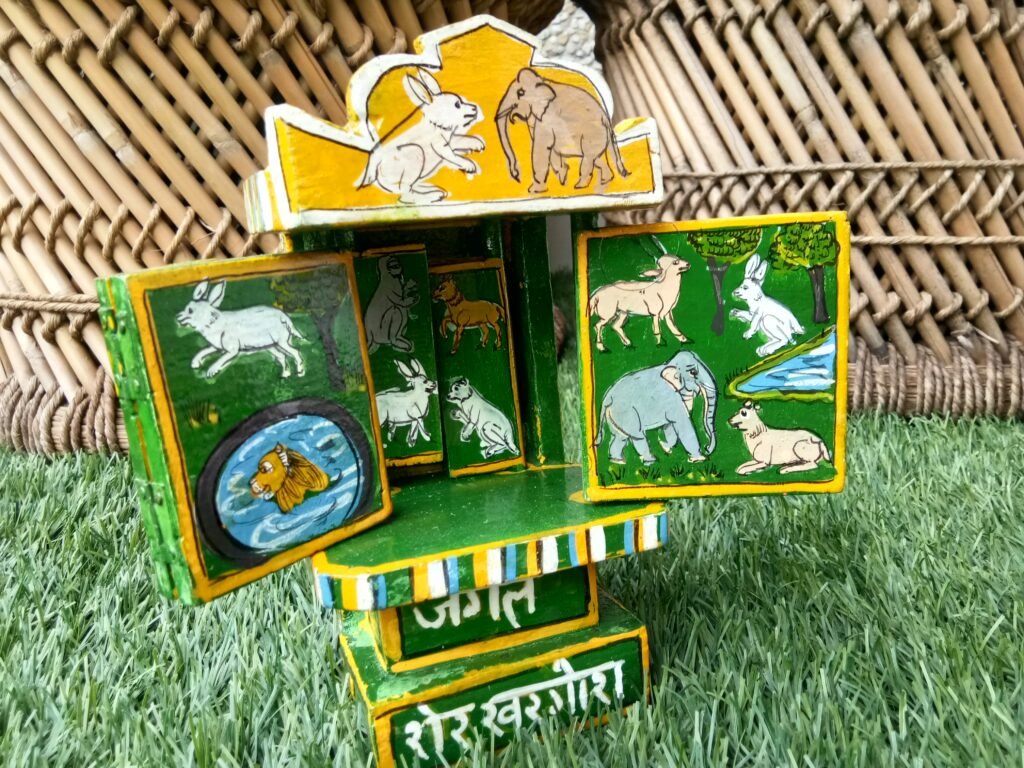
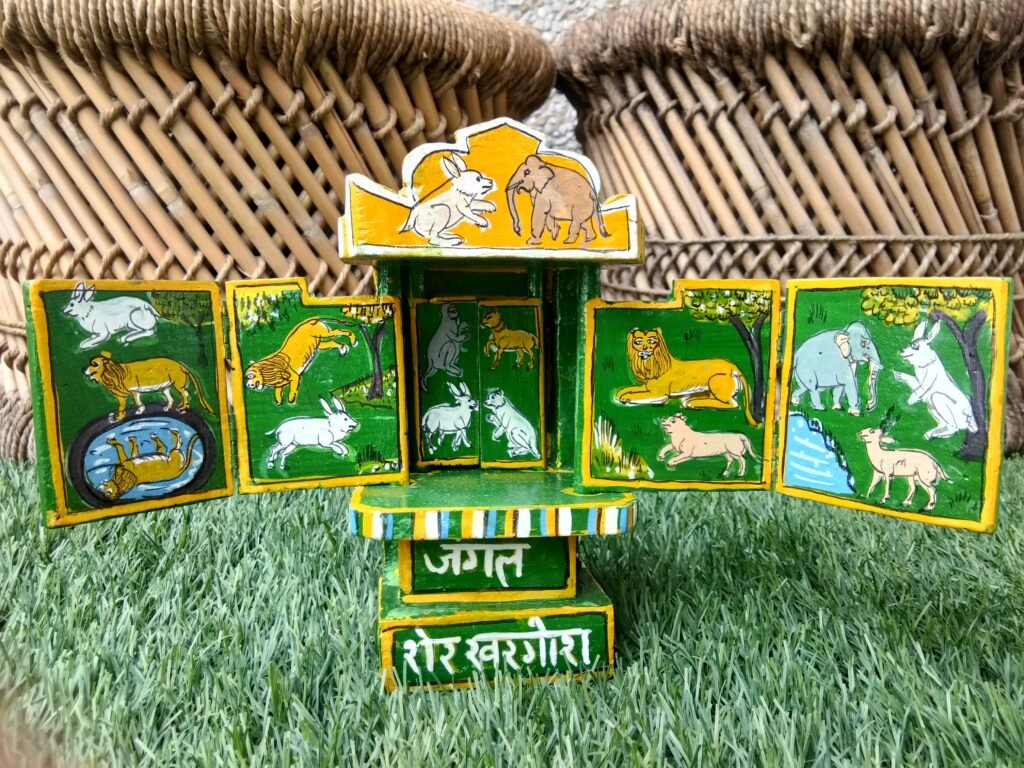
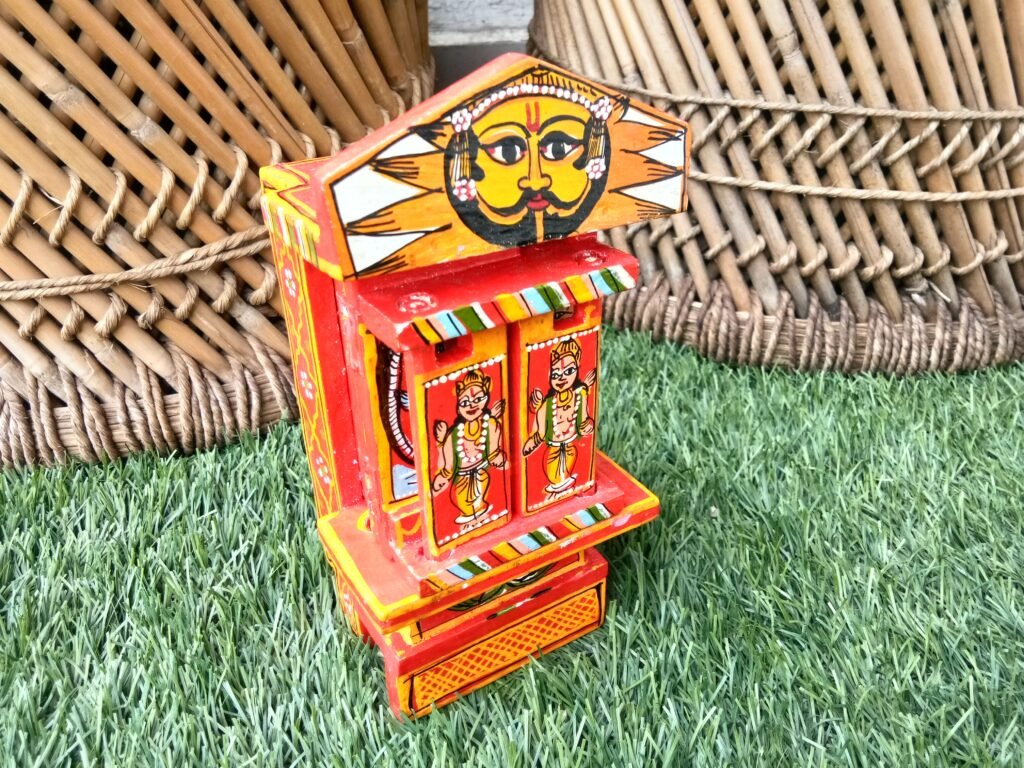
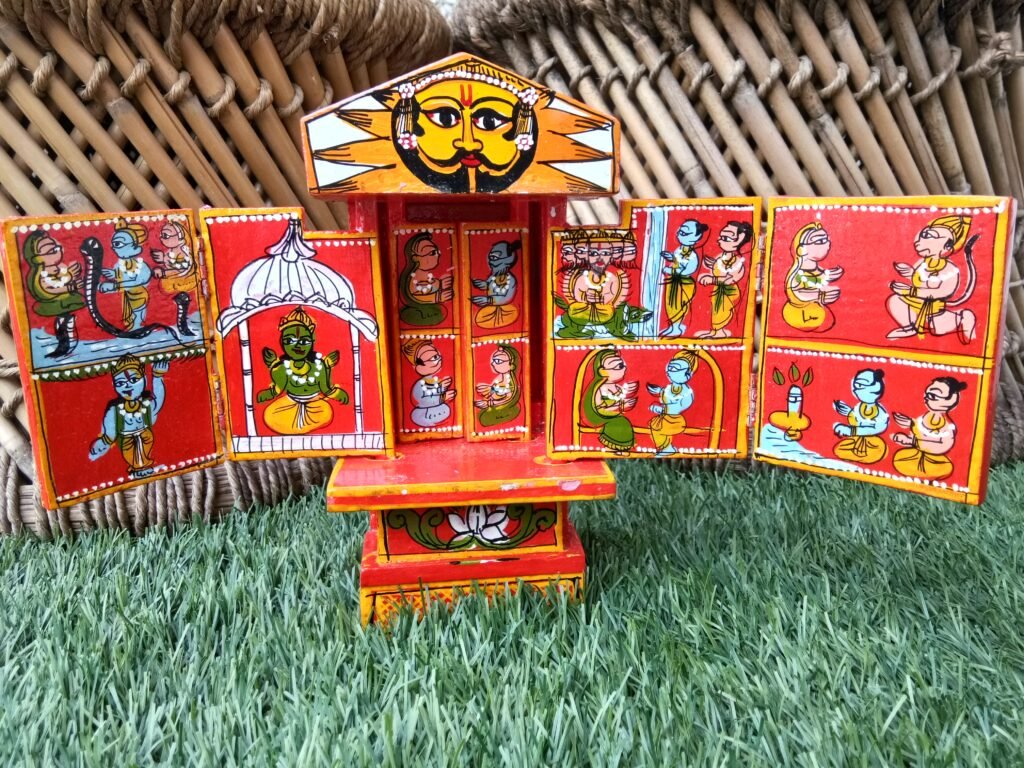
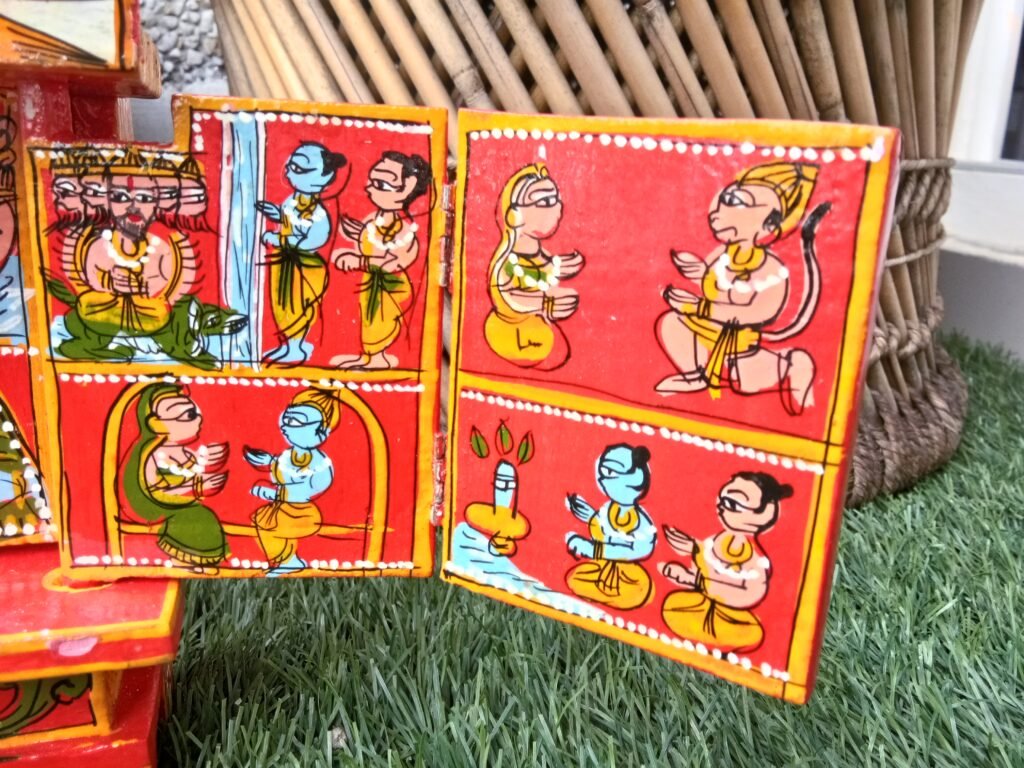
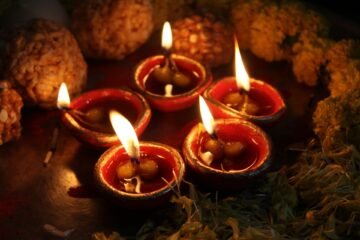
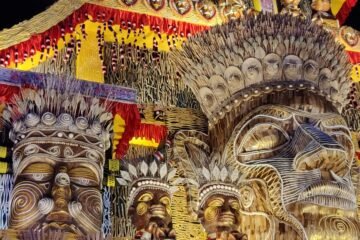
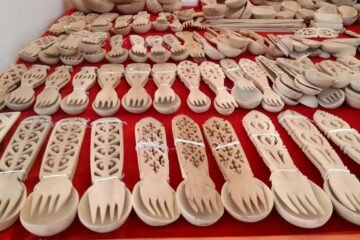
Hi I want to buy kaavad. Can you please give me the details as how to buy from them.
Hi Thanuja! Absolutely! I can connect you directly to Dwarkaji. Shall I mail you his number?
Yes please mail his number. It would be of great help. I really need one for my son and want to explore kaavad story telling.
Hi Thanuja. Mailed you the number this morning. All the best for your kavad shopping!
Hello, I would like to connect with you urgently regarding the Kaavad’s. Please could you share your contact information with me? Thanks.
Hi Poorvi. Could you please message me at 9871091844?
Hello Rachana, how do I buy Kaavad painting from Dwarkaji?